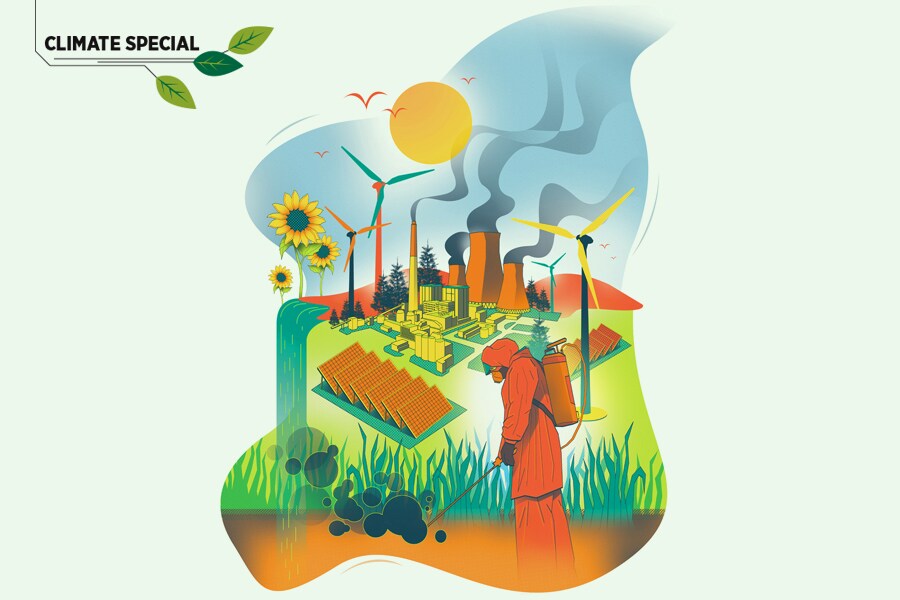Climate change is wreaking havoc in India. It needs clarity and action now
The practical way to meet India's growing energy requirements is to continue the dependence on thermal power (like coal, gas, diesel etc), which is the case now and is likely to continue for the next few decades. At the same time, not losing sight of our clean energy commitments will be imperative
 India is also the fifth largest economy in the world, which is growing faster than its peers. This upward growth trajectory, which includes going big on manufacturing, industrialisation and urbanisation, means high immediate energy requirements.
Illustration: Chaitanya Dinesh Surpur
India is also the fifth largest economy in the world, which is growing faster than its peers. This upward growth trajectory, which includes going big on manufacturing, industrialisation and urbanisation, means high immediate energy requirements.
Illustration: Chaitanya Dinesh Surpur
As I write this, the northeastern state of Sikkim has been hit by heavy rains, with floods and landslides claiming lives and leaving thousands of people stranded. Over the last few months, India faced its hottest summer yet, with a heatwave causing scores of casualties. The climate crisis is here, and it’s only getting more urgent.
At a diplomacy level, India has set ambitious mitigation targets: Achieving net-zero emissions by 2070, meeting 50 percent of our energy demand by non-fossil fuels by 2030, and reducing 1 billion tonnes of projected emissions from now till 2030. It will be a responsible step forward, considering that India is the third-largest carbon emitter in the world, after China and the US. As per the International Energy Agency (IEA), even as India’s per capita emissions (at close to 2 GT) are less than half of the world average, the country’s carbon emissions grew faster than its GDP in 2023, at slightly more than 7 percent, to reach 2.8 GT.
But India is also the fifth largest economy in the world, which is growing faster than its peers. This upward growth trajectory, which includes going big on manufacturing, industrialisation and urbanisation, means high immediate energy requirements. It is here that the country finds itself at the crossroads of a unique energy transition paradox. The practical way to meet the growing energy requirements is to continue the dependence on thermal power (like coal, gas, diesel etc), which is the case now and is likely to continue for the next few decades. At the same time, not losing sight of our clean energy commitments is imperative.
Forbes India’s annual climate edition this year contains a handful of features looking at different aspects of the climate crisis. There’s a story on how private power companies, which generate over 50 percent of India’s power requirements, are playing their part in the country’s growth story, while trying to double down on their capacities of non-fossil fuel power. We look at how climate and environmental sustainability can be at the centre of job creation, which is the most important political and economic mandate in India right now.
(This story appears in the 28 June, 2024 issue of Forbes India. To visit our Archives, click here.)


















